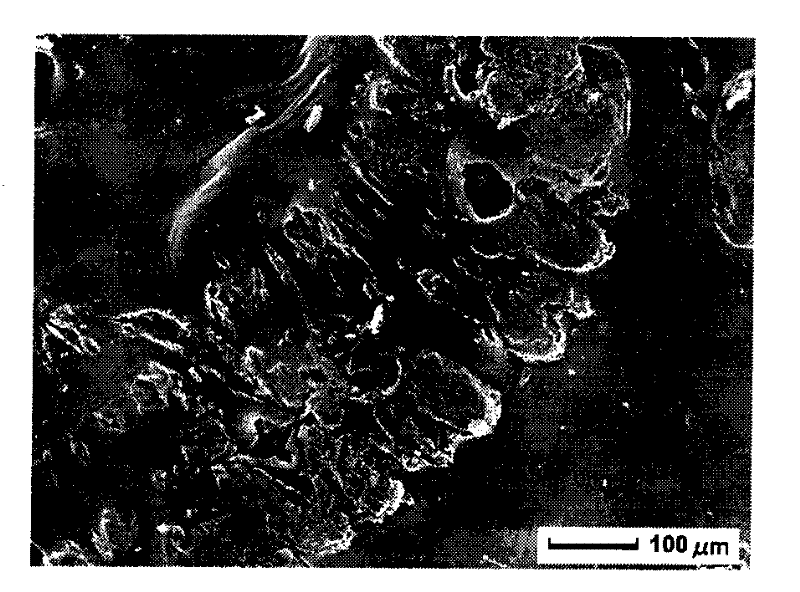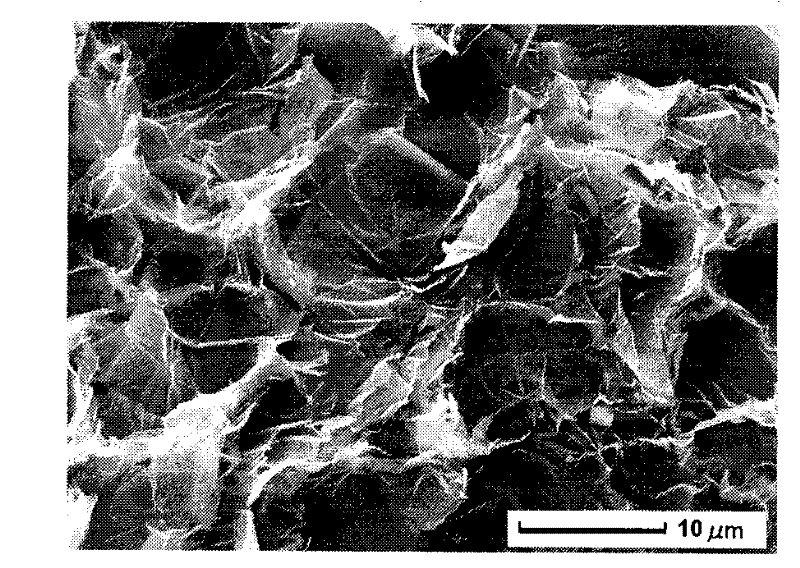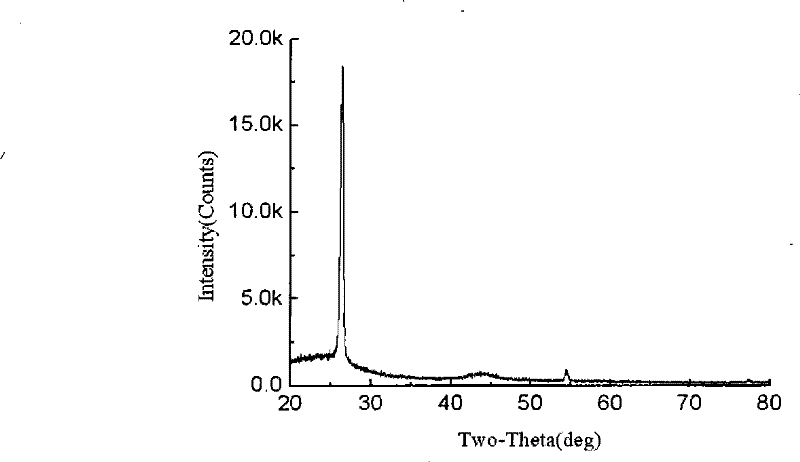Expanded graphite-based composite material and preparation method thereof
A technology of expanded graphite and composite materials, which is applied in chemical instruments and methods, other chemical processes, adsorbed water/sewage treatment, etc. It can solve the problems of large pore size, inability to effectively adsorb phenol molecules, and inability to effectively match phenol nano-scale small molecules. , to achieve the effect of dynamic adsorption and high application value
- Summary
- Abstract
- Description
- Claims
- Application Information
AI Technical Summary
Problems solved by technology
Method used
Image
Examples
Embodiment 1
[0018] Example 1: Using sucrose as the carbon source and KOH as the activator.
[0019] 1. Weigh 0.2g of expanded graphite and place it in a mold for briquetting.
[0020] 2. Soak the block in 20% sucrose solution, take it out after 2 hours, and place it in an oven with a temperature of 100° C. for 20 hours to cure.
[0021] 3. At 600°C, under a nitrogen atmosphere, place the solidified block in a tube furnace for carbonization, and the carbonization time is 6 hours.
[0022] 4. Take out the carbonized material and immerse it in a KOH solution with a mass concentration of 40% for 3 hours, take out the carbonized material and dry it at 80°C, and repeat the immersion several times.
[0023] 5. At 600°C, under a nitrogen atmosphere, place the block obtained in step 4 in a tube furnace for activation for 1 hour.
[0024] 6. Rinse the obtained composite material under running water for 20 hours, and then dry it at 80° C. to obtain the expanded graphite-based composite material. ...
Embodiment 2
[0025] Embodiment 2: with sucrose as carbon source, with K 2 CO 3 as an activator.
[0026] 1. Weigh 0.2g of expanded graphite and place it in a mold for briquetting.
[0027] 2. Soak the block in 40% sucrose solution, take it out after 2 hours, and place it in an oven with a temperature of 120° C. for 20 hours to cure.
[0028] 3. Put the solidified block in a tube furnace for carbonization at 500°C under a nitrogen atmosphere, and the carbonization time is 5 hours.
[0029] 4. Take out the carbonized material and immerse it in a KOH solution with a mass concentration of 40% for 3 hours, take out the carbonized material and dry it at 80°C, and repeat the immersion several times.
[0030] 5. At 500°C, under a nitrogen atmosphere, place the block obtained in step 4 in a tube furnace for activation for 2 hours.
[0031] 6. Rinse the obtained composite material under running water for 20 hours, and then dry it at 80° C. to obtain the expanded graphite-based composite material...
Embodiment 3
[0032] Embodiment 3: with sucrose as carbon source, with CO 2 for activating gas.
[0033] 1. Weigh 0.2g of expanded graphite and place it in a mold for briquetting.
[0034] 2. Soak the block in 70% sucrose solution, take it out after 1 hour, and place it in an oven with a temperature of 160° C. for 30 hours to cure.
[0035] 3. At 300°C, under a nitrogen atmosphere, place the solidified block in a tube furnace for carbonization, and the carbonization time is 4 hours.
[0036] 4. Put the block obtained in 4 into a tube furnace, and pass CO at 900°C 2 gas, and activated for 6 hours to obtain an expanded graphite-based composite material.
PUM
| Property | Measurement | Unit |
|---|---|---|
| particle size (mesh) | aaaaa | aaaaa |
| specific surface area | aaaaa | aaaaa |
Abstract
Description
Claims
Application Information
 Login to View More
Login to View More - Generate Ideas
- Intellectual Property
- Life Sciences
- Materials
- Tech Scout
- Unparalleled Data Quality
- Higher Quality Content
- 60% Fewer Hallucinations
Browse by: Latest US Patents, China's latest patents, Technical Efficacy Thesaurus, Application Domain, Technology Topic, Popular Technical Reports.
© 2025 PatSnap. All rights reserved.Legal|Privacy policy|Modern Slavery Act Transparency Statement|Sitemap|About US| Contact US: help@patsnap.com



